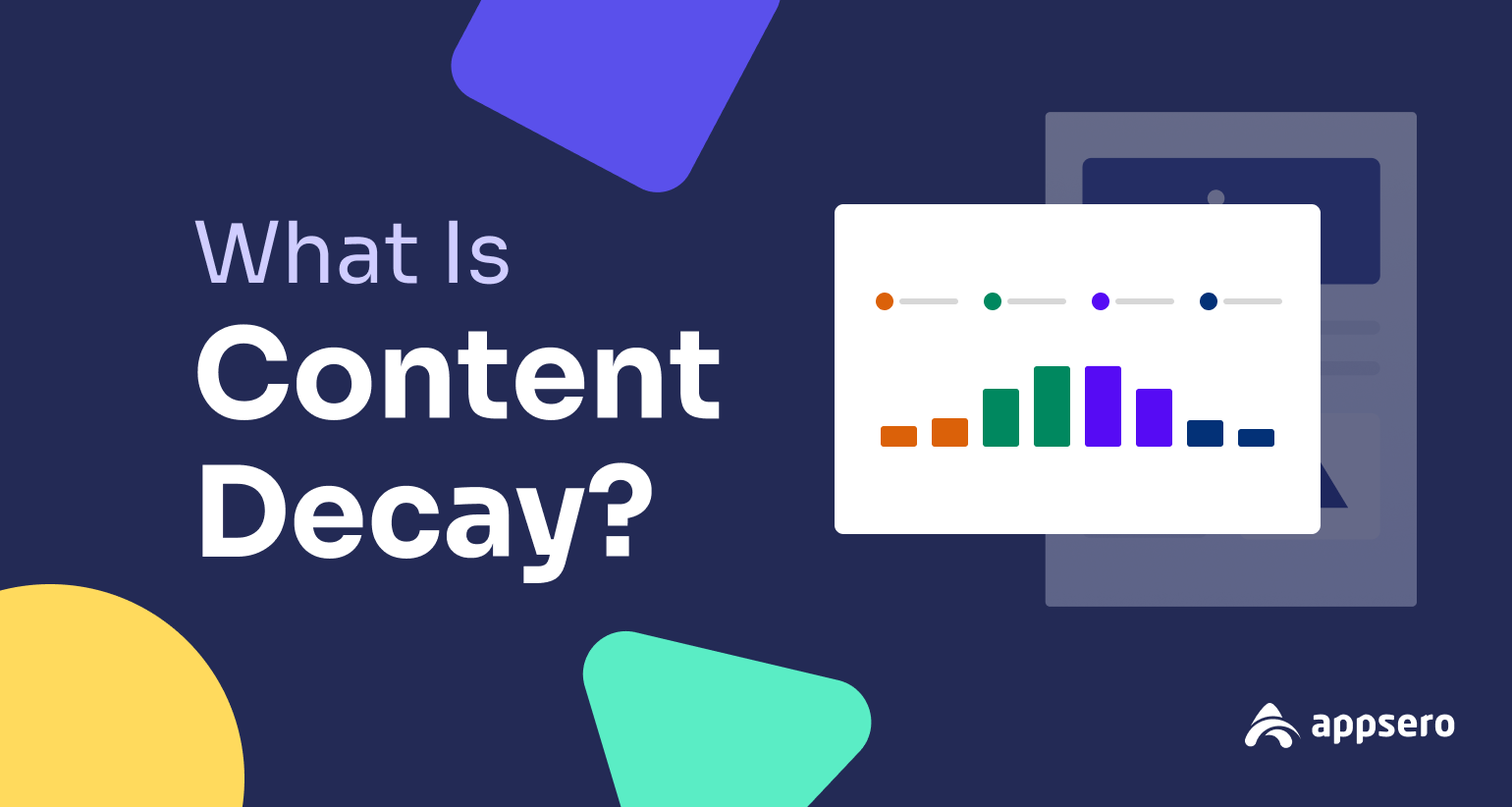
What is Content Decay and 11 Proven Ways to Fix It
Many organizations invest significant time, resources, and creativity into creating new content without giving due attention to the existing content on their websites. As a result, content decay sets in, leading to decreased relevance, outdated information, and underutilized assets.
So, what exactly is content decay? Picture this: you’ve poured your heart and soul into crafting compelling blog posts, engaging videos, and informative guides. But as time goes by, your once magnificent content starts losing its sparkle. Fear not, for where there’s decay, there’s also the opportunity for rejuvenation!
This article explains the reasons that cause content to decay and guides you through the ways to fix content decay like a pro. Keep reading to learn more about content decay and everything about it.
Quick navigation:
- Content decay: what does it mean?
- How content decay affects website performance
- The possible causes of content decay
- How to fix content decay: Best 11 practices
- Common challenges in fixing content decay
- Act fast to improve your website’s overall performance
Content decay: what does it mean?

Content decay refers to a piece of content gradually losing its relevance, value, or accuracy over time. It typically happens due to changes in technology, industry standards updates, or changes in user preferences or behavior.
As a result, the content loses its position in search engines and becomes less informative or engaging to readers. Sometimes, it may even start to provide outdated or incorrect information. Some examples of content decay include:
- Blog posts that reference outdated statistics or facts
- Content about a specific technology that evolves or becomes obsolete
- How-to guides that are no longer helpful because the app or tool has changed how it works
- Content that covers current events, pop culture, or trends may become stale as time passes
- Content that relies heavily on text may become less engaging as visual and interactive content gain popularity
You need to consider issues related to content decay seriously as soon as you detect it. Because your website may lose huge traffic within a few months if content decay goes unnoticed. Learn more about how content decay affects a website’s performance from the following section.
Why You Should Avoid Generic Content
How content decay affects website performance

Content decay can have a substantial impact on website performance. You need to regularly review and update content to avoid its decay and protect your site from getting affected. Here are some specific ways content decay affects a website’s performance:
Decreased organic traffic
As content becomes outdated or less relevant, search engines may rank it lower in search results. This leads to reduced visibility and fewer organic clicks to the website, resulting in a decline in overall traffic.
Higher bounce rates
When users land on a page that doesn’t meet their expectations or provide the information they seek, they are more likely to leave the site quickly. Thus, the bounce rate becomes higher. This can negatively impact rankings.
Negative user experience
Users expect up-to-date and useful information. They’ll lose trust in your website if they encounter outdated content. This negative user experience can harm the website’s reputation and lead to fewer return visits and engagements.
Impact on conversion rates
People are less likely to make purchases or submit forms if the content fails to address their needs. That’s how content decay can result in a decline in conversion rates and cause you to miss business opportunities.
Decreased backlinks and social signals
Other websites and sources won’t link to your article or share your content on social media if it doesn’t align with the latest information and trends. A lack of external signals can contribute to decreased visibility and authority in search engine algorithms.
Also Read: How to Improve Domain Authority of Your WordPress Website
The possible causes of content decay

Content decay can occur due to various factors. One common cause is outdated or inaccurate information. Changes in search intent and evolving competition can render previously valuable content less relevant. Additionally, technological advancements and changing search engine algorithms can accelerate content decay. Let’s learn more about these reasons.
1. Decreased relevance
As time goes by, trends change, preferences evolve, and what once captured the attention of your audience may start to lose its appeal. So it’s crucial to understand your target audience’s pulse to continuously adapt your content to their ever-changing needs. Your content may become less relevant over time if it fails to address current trends, needs, or interests of the target audience.
2. Lack of topical depth
The lack of in-depth coverage can hinder your content’s ability to stand out and compete with other resources. Users often seek in-depth and accurate information, and shallow content may fail to meet their expectations. You’ll ultimately face decay if your content struggle to provide valuable insights and compete with more detailed and authoritative content.
3. Internal competition (cannibalization)
Internal competition, also known as cannibalization, can pose a significant challenge. Imagine having multiple pages on your own website targeting the same keywords or covering similar topics. These pages can compete with each other in search results. This internal competition can lower rankings for all pages involved, reducing overall visibility.
4. Technological advancements

Technological advancements can be a double-edged sword for your content. On one hand, they bring progress and innovation. On the other hand, they can cause your content to become irrelevant in the blink of an eye.
5. External competition
The presence of new and fresh content from competitors or industry peers can diminish the visibility and impact of existing content. Increased competition makes it harder for older content to stand out and attract audience attention. If you’re not keeping up, your content may find itself overshadowed by fresh and exciting alternatives.
6. Changes in search intent
As user behaviors and expectations evolve, so does their search intent. What they sought yesterday may not be what they desire today. Content that fails to align with the current search intent may lose visibility and relevance.
7. Content lifecycle stages
Just like a living organism, content goes through different phases – from the initial buzz of publication to the peak of its performance, and eventually, to its decline. Without proper maintenance and updates, content can become stagnant and lose its charm.
Content that focuses on specific technologies, software versions, or tools can become outdated as new advancements emerge. For example, content about outdated software versions may lose relevance as new versions are released.
8. Evolving search engine algorithms
Search engines constantly refine their algorithms to improve search results. These algorithms have a profound impact on how content is ranked and displayed. Failure to keep up with the changes and giving in to black hat SEO techniques can leave your content stranded in search engine obscurity. This will ultimately result in decreased visibility and lower search rankings.
9. Poor maintenance and updates
Imagine having a beautiful garden but neglecting to water the plants or pull out the weeds. The result? A withering landscape. The same goes for your content. Regular audits, updates, and improvements are essential to ensure its vitality and freshness. Otherwise, your content may suffer from decay and negatively impact user experience and search engine rankings.
10. Lack of backlinks and external signals

Let’s not forget the importance of backlinks and external signals. These little gems of credibility and authority can make or break your content’s success. Just like in the real world, having influential connections and external endorsements can give your content the boost it needs to stand out from the crowd.
Backlinks from reputable websites and external signals like social media shares and mentions indicate content quality and relevance. If content lacks these signals, it may be perceived as less authoritative and valuable by search engines.
11. Poor user experience
Last but certainly not least, we have the impact of poor user experience. Content that provides a poor user experience, such as slow loading times, difficult navigation, or a lack of mobile optimization, can lead to decreased engagement and a decline in performance. Users expect a seamless and enjoyable experience, and content that fails to deliver may suffer from decay.
How to fix content decay: 11 best practices
Let’s breathe new life into your content, captivate your audience, and achieve long-lasting success in the ever-evolving digital landscape. Here are the best practices to fix content decay and reclaim the glory of your content marketing efforts:
1. Identify outdated or irrelevant content
The first step to fixing content decay is finding the affected pages. You can update the content only when you can detect which particular pages need attention. Conduct a comprehensive content audit of your website. You can identify decayed content in many ways using tools like Google Analytics, Google Search Console, SEMrush, Ahrefs, and more.
Google Search Console is the best tool that can provide you with authentic performance data for your website. This tool enables you to pinpoint specific pages that require updates or improvements to regain their relevance and visibility in search results. Follow the below steps to use it effectively:
Step 1. Access Google Search Console: Log in to your Google Search Console account and navigate to the property for the website you want to analyze.
Step 2. Click on “Performance” report: In the left-hand menu, click on “Performance” to access the report that provides insights into the performance of your website in Google search results.
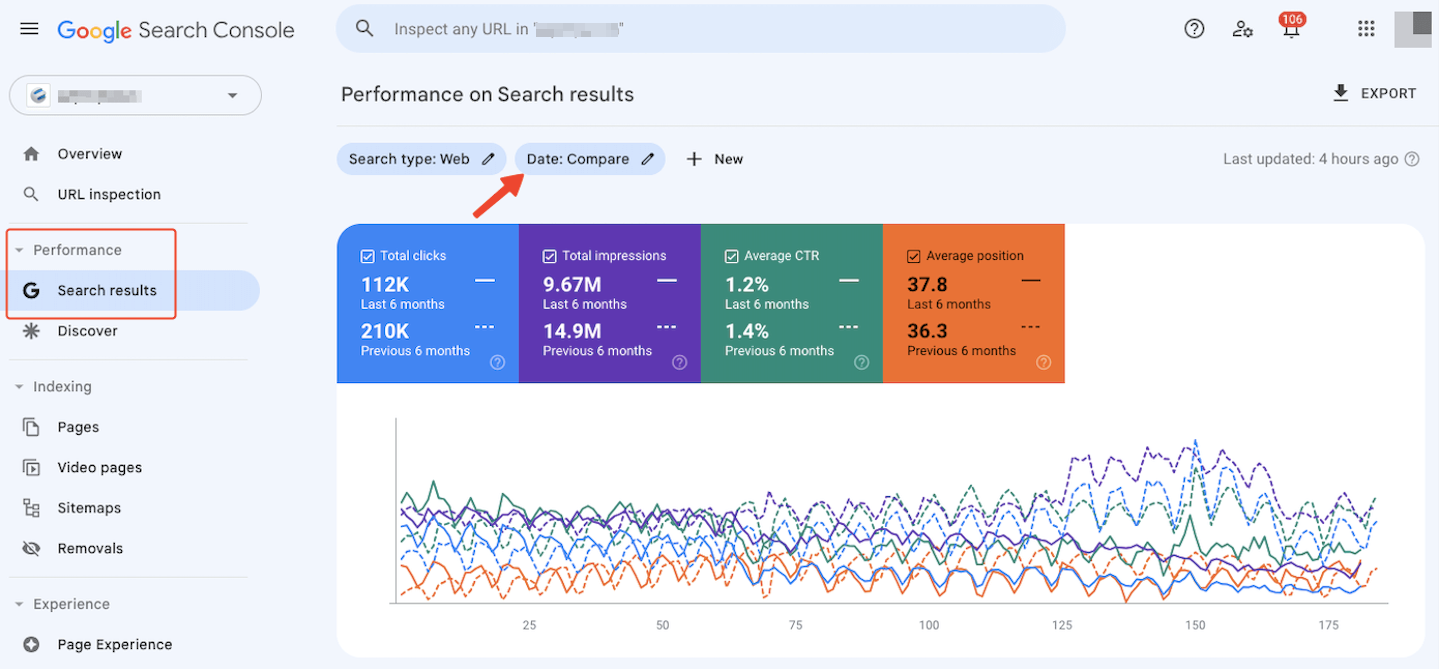
Step 3. Set the date range: Choose the desired date range for your analysis. To identify decayed content. Select a range that covers a significant timeframe, such as the past year. We chose 6 months here.
Step 4. Review overall performance: Identify any significant changes in performance metrics, such as clicks, impressions, average position, and click-through rate (CTR). This can indicate potential decayed content that needs attention.
Step 5. Explore specific pages: Scroll down to the “Pages” section of the Performance report. Find out the negative results that show declines for the metrics over your chosen period.
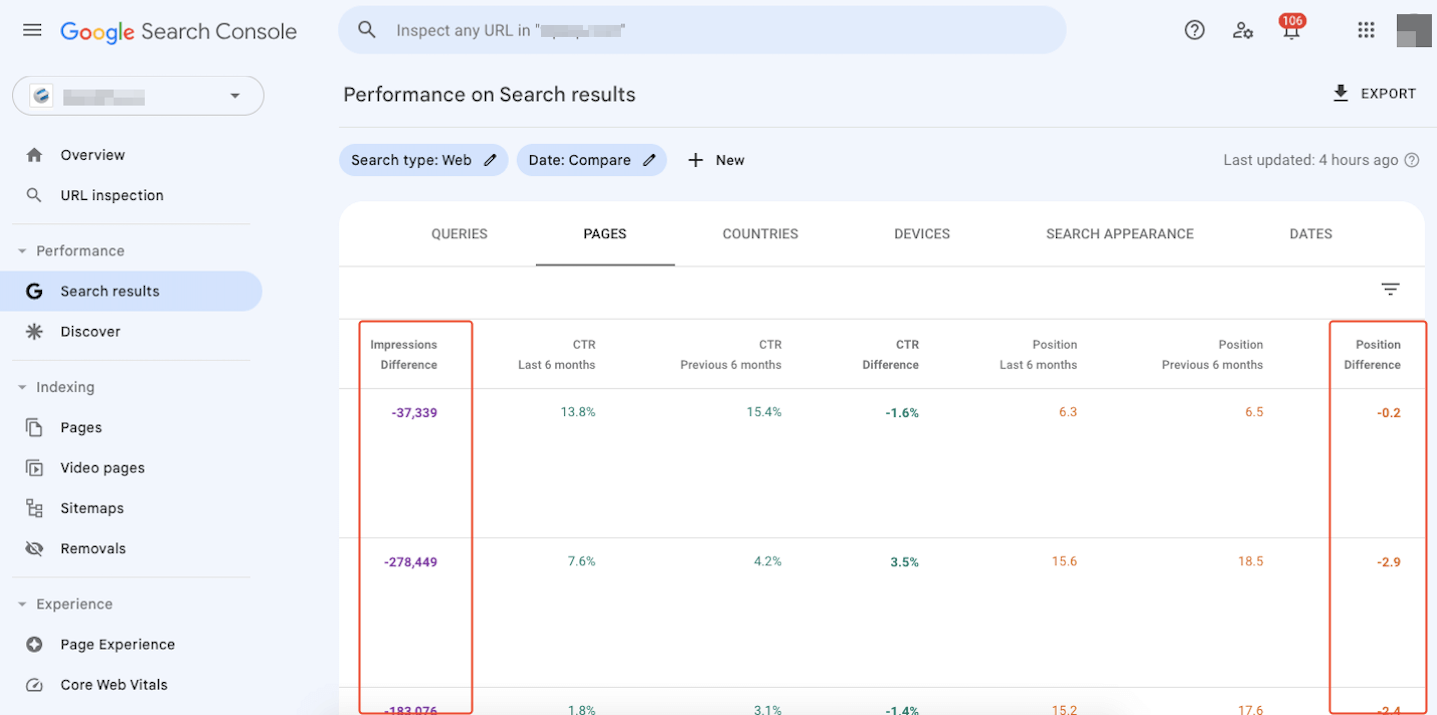
Look for pages with a significant drop in clicks, positions, or impressions compared to the previous period. This decline may suggest content decay. Pay attention to pages that were previously performing well but are experiencing a sharp decline.
Step 6. Check search queries: Analyze the search queries that drive traffic to the decayed pages. Are they still relevant to the content? If there’s a mismatch between the search queries and the page’s topic, it could suggest a need to update or optimize the content to align with user intent.
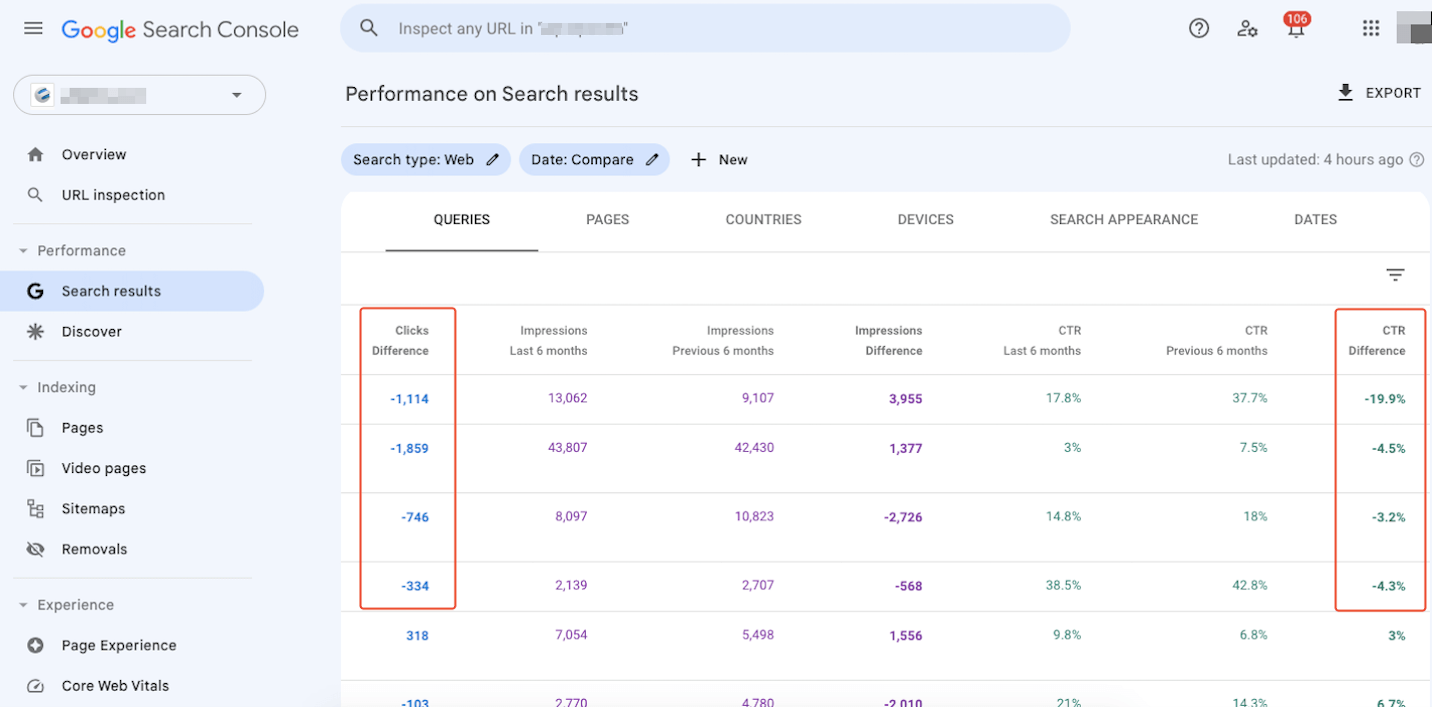
Step 7. Take action: Once you’ve identified decayed content, it’s time to take action. Consider updating the content with the latest information, improving the user experience, or optimizing it for relevant keywords.
2. Update the content with fresh insights
Continuously monitor industry trends, news, and developments related to your content topics. Subscribe to relevant newsletters, follow industry influencers, and engage in online communities to stay updated with the latest insights and perspectives. Once you know the latest findings and statistics, incorporate them into your content to provide up-to-date and accurate information to your readers.
You need to also review the visuals and media elements within your content. Replace outdated images, graphs, or charts with fresh ones that reflect the current trends or data. Visuals can enhance the engagement and impact of your content.
Update your content with relevant keywords and phrases based on current search trends. Consider how search intent may have evolved and adjust your content to align with those changes. This helps improve your content’s visibility in search engine results.
3. Add more depth if needed
Review your decayed content and identify areas where you can expand on existing points. Dig deeper into concepts, provide more examples, or offer additional analysis to offer a more comprehensive understanding of the topic. This added depth will enrich the reader’s experience.
You can also seek out different viewpoints or expert opinions related to the subject matter. Interview industry leaders, influencers, or professionals who can provide fresh insights. Incorporate their perspectives into your content to broaden the range of ideas and add depth to your discussions.
4. Combine multiple pieces of content

Start by identifying pieces of content on your website that cover similar or related topics. Look for common themes, subtopics, or sections that can be merged or integrated to create a cohesive and comprehensive piece of content. Then keep the better one and delete the less informative piece of content from your website.
5. Optimize content readability and visual appeal
Long blocks of text can be overwhelming and discouraging to read. Break up your content into shorter paragraphs, utilize subheadings to divide sections, and use bullet points or numbered lists to highlight key points. This helps readers scan and navigate your content more easily.
White space (or negative space) is the empty space between paragraphs, images, and other elements on your page. It provides visual breathing room for readers and enhances readability. Use ample white space to create a clean and organized layout that is visually appealing and clutter-free. The following tips will help you make your content more user-friendly:
- Choose a font that is easy to read on various devices and screen sizes.
- Integrate relevant visuals such as images, graphs, infographics, or videos to enhance the visual appeal of your content.
- Use formatting options like bold, italics, or underline to highlight important keywords, phrases, or key takeaways.
- Choose a color palette that provides sufficient contrast between the text and the background for readability.
- Use responsive design principles to ensure your content adapts well to different screen sizes, including mobile devices.
Remember, striking a balance between aesthetics and readability is key to creating an enjoyable and informative reading experience.
6. Stay up-to-date with SEO best practices
By keeping your content aligned with SEO best practices, you can ensure that your website and content are optimized for search engines. Keep an eye on trusted SEO sources such as Google Search Central Blog, Moz, Search Engine Journal, SEMrush Blog, and more to regularly get updates, tips, and insights on SEO best practices.

Stay aware of major search engine algorithm updates, such as Google’s Helpful Content, Panda, Penguin, and Core updates. Understand how these updates can impact your website’s visibility and rankings. SEO is an ever-evolving field, so embrace a mindset of continuous learning and experimentation. Test different strategies, analyze results, and adapt accordingly.
The Ultimate SEO Guide for WordPress Developers
7. Incorporate user-generated content for added relevance
Encourage your audience to share their photos or videos featuring your products or services. Share these visuals on your website’s blog post, social media, or email newsletters. It adds authenticity and allows users to visualize themselves using your offerings.
Invite your customers to share their reviews, success stories, case studies, or use cases related to your products or services. Highlight these stories on the decayed content to demonstrate real-life examples of how your offerings have made a positive impact. It adds credibility and relevance to your content.
Remember always to obtain proper permissions and rights to use user-generated content and respect user privacy.
8. Fix the links across your content
Fixing internal links, external links, and backlinks is an important step in addressing content decay. Conduct a thorough analysis of your website to identify internal links and external links that are broken, leading to error pages, or pointing to outdated or irrelevant content.
For broken internal links, update them to point to the correct and relevant pages on your website. If the content no longer exists or has been removed, set up 301 redirects to redirect users to related content or a relevant page.
Broken backlinks can negatively impact user experience and SEO performance. Fixing these links is more complex than fixing internal links. You need to follow the below steps to do it perfectly.
- Identify broken or low-quality backlinks: Use backlink analysis tools such as Ahrefs, Moz, or SEMrush to identify broken or low-quality backlinks pointing to your website.
- Request removal of harmful or irrelevant backlinks: Reach out to the website owners or webmasters of sites linking to your content and request the removal of harmful or irrelevant backlinks.
- Disavow low-quality or spammy backlinks: If you cannot remove certain backlinks, you can disavow them using Google’s Disavow Tool. This tells search engines to disregard those backlinks when evaluating your website’s authority and ranking.
- Build high-quality backlinks: Focus on acquiring high-quality backlinks from reputable websites relevant to your industry or niche. Create valuable and shareable content that naturally attracts backlinks. Engage in guest blogging, influencer collaborations, or outreach campaigns to promote your content and gain authoritative backlinks.
- Monitor and maintain backlink profile: Regularly monitor your backlink profile using backlink analysis tools. Keep an eye on new backlinks, identify any negative patterns, and take necessary action. Continuously work on improving the quality and diversity of your backlink profile.
Regularly review and optimize your internal and external linking strategies to ensure your content remains accessible, relevant, and visible to both users and search engines.
9. Relaunch your posts with an updated publishing date
Google prioritizes new content for time-sensitive information. So, it would be better if you relaunch your updated content with a recent publishing date. This will surely increase your chances to get valued by Google. A recently published post with up-to-date information will be rewarded with early traction.
10. Promote content through multiple channels
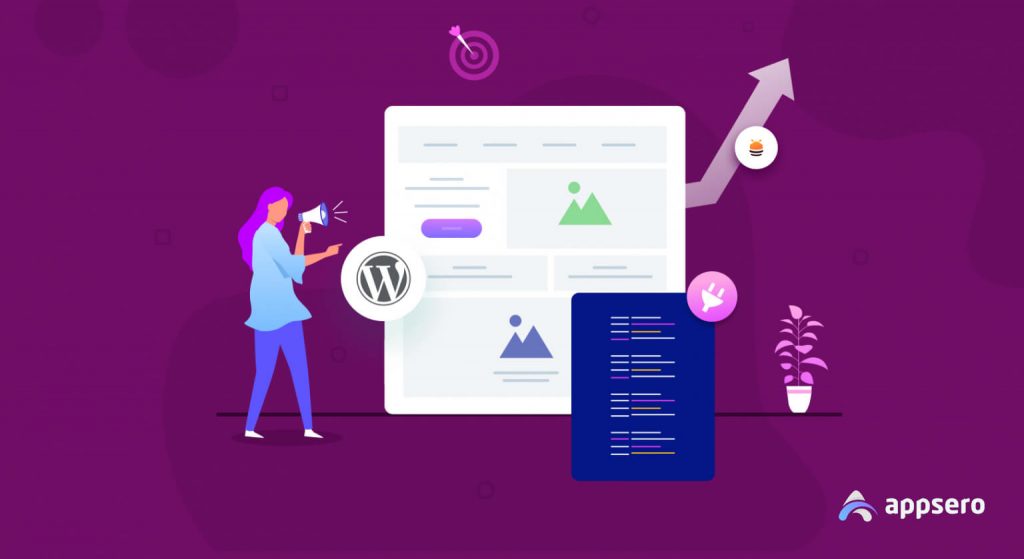
Once you’ve updated your content, don’t forget to repromote it. Share it on your social media channels, send it to your email subscribers, or collaborate with other relevant websites or influencers to increase its visibility and reach. You can also spread your content smartly on discussion forums and question-and-answer platforms like Reddit and Quora.
11. Monitor and analyze the performance
Before implementing changes, establish a baseline by recording the pre-update performance metrics of the decayed content. This serves as a point of comparison to evaluate the impact of your updates accurately. Then, compare the post-update performance metrics against the established baseline and industry benchmarks after at least one month.
Analyze the traffic and engagement metrics of the updated content. Track changes in page views, unique visitors, time on page, and bounce rate. Assess whether the changes have resulted in improvements beyond what was previously observed.
If the goal of the updated content is to drive conversions, monitor changes in conversion rates, form submissions, purchases, or other desired actions. Track the search engine rankings of the updated content for relevant keywords. Monitor changes in the ranking positions over time to understand if your updates have positively impacted visibility and organic search traffic.
Based on the insights gathered from monitoring and analysis, iterate and optimize the content further if needed. Make data-driven decisions to refine the content, such as adjusting the messaging, layout, calls-to-action, or other elements based on the performance data.
Common challenges in fixing content decay

While content decay may continue to be a challenge, you can mitigate its impact and maintain a strong online presence by being proactive, staying informed, and consistently updating and optimizing your content. However, fixing content decay can present various challenges. Here are some common challenges you may encounter and quick tips for addressing them:
- A large volume of decayed content: With a large volume of content, it can be time-consuming to manually review each piece and update it with the latest information.
- Balancing quality and quantity: It’s important to address decayed content promptly, but rushing the process may lead to subpar updates. You need to prioritize high-impact pages or those with significant traffic while allocating sufficient time to ensure quality updates.
- Maintaining consistency in style and tone: Fixing content decay may result in inconsistencies in style, tone, and messaging across your website. Create content guidelines and provide clear instructions to content creators and editors to ensure consistency during updates.
- Dealing with technical challenges: Some decayed content may require technical fixes, such as broken links, outdated plugins, or formatting issues. Collaborate with your web development or technical team to address these challenges promptly.
- Ensuring user experience: Content updates should not compromise the user experience. Pay attention to factors like page load speed, mobile responsiveness, and readability.
- Tracking and measuring impact: After updating decayed content, you may still fail to see satisfactory outcomes. Continuously evaluate and iterate based on data to further improve the performance of your updated content.
- The team focusing on new content only: When the focus is solely on creating new content, existing content may be overlooked or neglected. Allocate dedicated resources and time for content maintenance and updates.
- Continuous process: Content decay is an ongoing challenge that can persist even after initial efforts to address it. You need to regularly update the content to avoid its decay.
Now that you know the challenges, let’s overcome them following our tips.
Act fast to improve your website’s overall performance
You need to take swift action. Otherwise, the amount of decayed content may overwhelm you within a few months. And, don’t forget that content performance is not a one-time assessment. Regularly monitor and adjust your content strategy based on ongoing performance analysis. Stay agile and adapt to changing trends, user behavior, and business goals to ensure ongoing success. Let’s save your content before it’s too late.
Subscribe To Our Newsletter
Don’t miss any updates of our new templates and extensions
and all the astonishing offers we bring for you.
